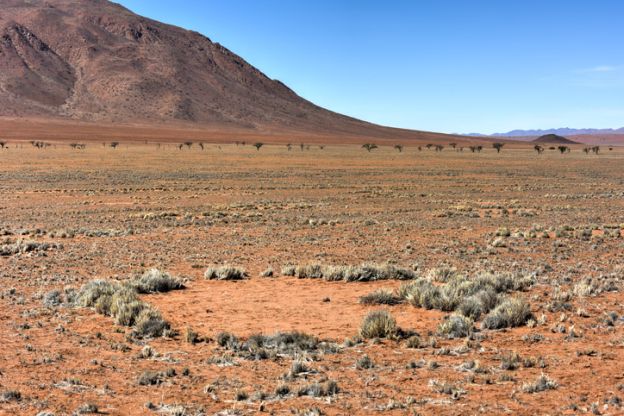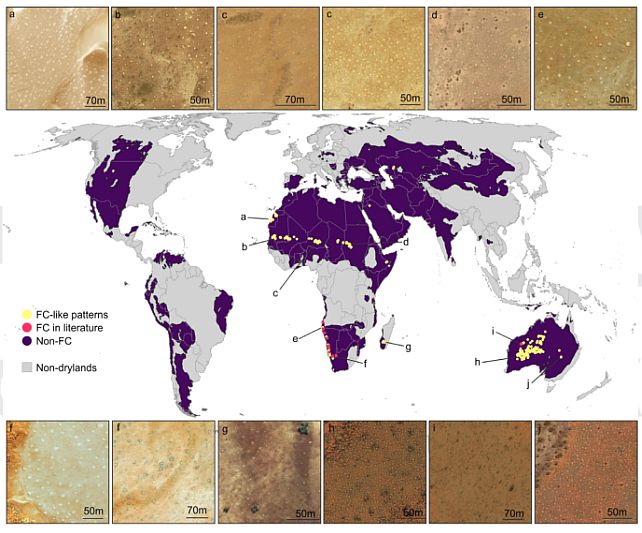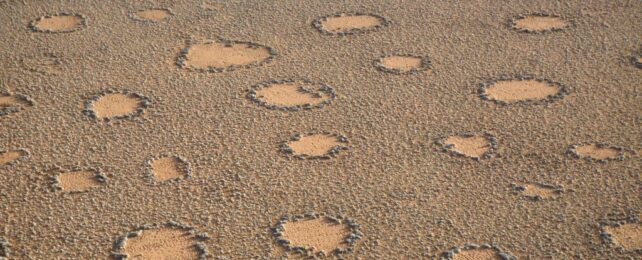Mysterious, bare patches of ground that polka-dot the deserts of Namibia and Australia are far more widespread than we knew.
They're known as fairy circles, and a new global assessment has counted 263 sites where these bald spots can be found, spread across three continents and 15 countries, including Sahel, Madagascar, and Middle-West Asia. This new information could help scientists figure out what causes them, a question that is proving surprisingly tricky to answer.
"We conducted a global and systematic assessment of fairy circle-like vegetation patterns and discovered hundreds of [fairy-circle]-like locations on three continents," write a team led by environmental scientist Emilio Guirado of the University of Alicante in Spain.
"Our study provides insights into the ecology and biogeography of these fascinating vegetation patterns and the first atlas of their global distribution."

Fairy circles are a true ecological mystery. They appear in desert regions as circular, barren 'pavements' in low grassy vegetation that otherwise covers the ground – patches of dry, naked earth, up to around 12 meters (39 feet) in diameter, and almost always separated spatially – not touching or overlapping.
Scientists were only familiar with examples in Namibia until 2014, when they were recorded pocking the Pilbara desert of Western Australia. But we still don't know with certainty what causes them. The termite interpretation has been argued extensively, but more recent research – and much, much older knowledge – suggests that the tiny insects could be playing a role.
The idea that the circles help the vegetation maximize sparse water resources has been gaining traction. But the countries' two landscapes drain differently, which complicates things. The notion that other plant species might be leaving behind toxins was considered for a while; that was ruled out in 2021.

Part of the problem is that these circles are found in parts of the world that are highly inhospitable and difficult to get to. A lot of research relies on drone and satellite imagery. But this, Guirado and his team realized, was a more powerful tool than we knew. Because if we can find more landscapes in which these strange formations can be found, we can look for what makes them similar, rather than focusing just on the differences.
They undertook a systematic survey using very high resolution satellite imagery, and used machine learning to analyse the results, to carefully study 574,799 hectare-sized plots of land around the world. This painstaking analysis rewarded the scientists with a vastly expanded atlas of fairy circle sites.
"Our analyses revealed 263 locations with [fairy-circle]-like vegetation patterns distributed across drylands worldwide," they write.
"These include those already identified in Namibia and Western Australia, as well as areas never described before, including the Sahel, Western Sahara, Horn of Africa, Madagascar, Southwest Asia, or Central and Southwest Australia. By doing so, our study provides a global atlas of areas showing FC-like vegetation patterns and expands the known existence of this vegetation type to new countries and continents."

This information, the researchers say, will help narrow down what causes them. This is because they were able to identify specific features common to all the sites in which the fairy circles can be found. These include a very dry, arid, desert environment; high temperatures and high precipitation seasonality; and soil with very low nutrients, and a high sand content.
Interestingly, the team also found that areas with fairy rings show more stable vegetation productivity over time than surrounding areas without fairy rings. Their findings, Guirado and his colleagues say, can help identify region-specific reasons why fairy circles might emerge.
"The global atlas introduced here advances our understanding of the biogeography of fairy circle-like vegetation patterns and will facilitate conducting future research about the characteristics and mechanisms underlying these enigmatic vegetation patterns in locations never studied so far," they write.
"Our work also paves the way for further research on the functional implications of these vegetation structures, which make ecosystems more stable and may help them to avoid tipping points associated with climate change."
The research has been published in the Proceedings of the National Academy of Sciences.
